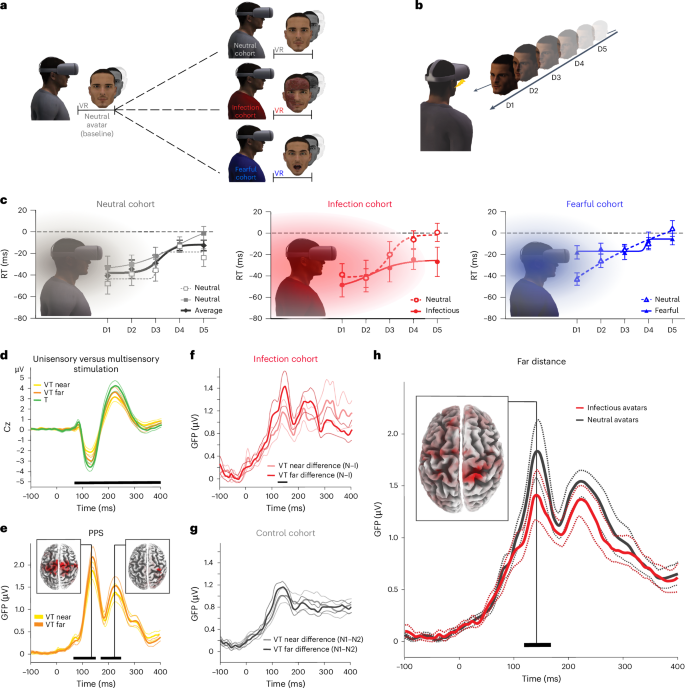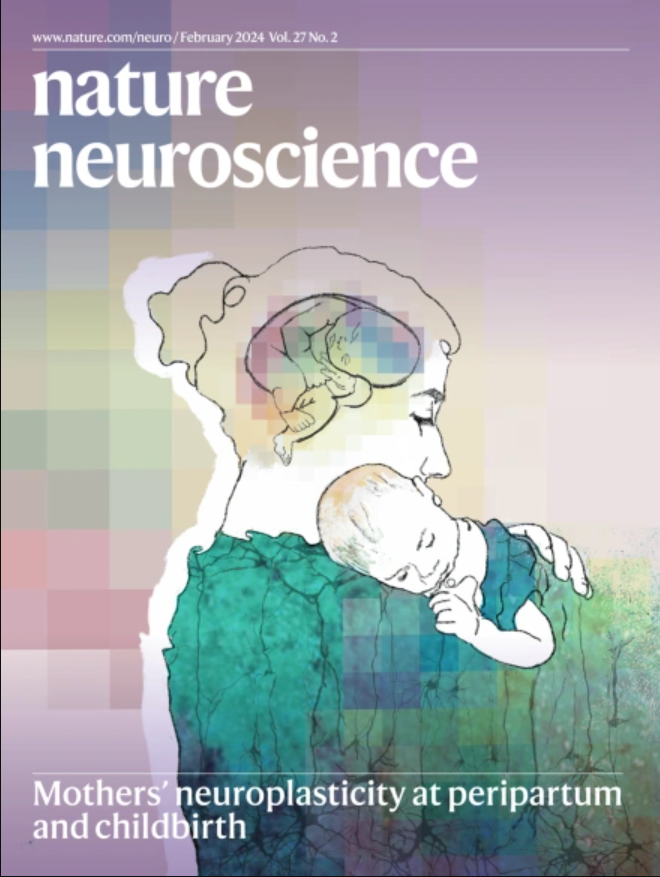对虚拟感染的神经预期会触发免疫反应
IF 20
1区 医学
Q1 NEUROSCIENCES
引用次数: 0
摘要
一旦与病原体发生接触,免疫系统可能就来不及做出反应了。在这里,我们询问预期神经反应是否可能感知到潜在的感染并向免疫系统发出信号,为免疫系统做出反应做好准备。我们表明,通过心理物理学、脑电图和功能性磁共振成像测量,多感觉运动区域可以预测与接近的传染性化身的潜在接触,并进入虚拟现实中的周边个人空间,并激活显著性网络。这种主动的神经预期刺激了先天淋巴样细胞频率和激活的变化,反映了在实际感染中看到的反应。感染感知脑区与下丘脑之间连接模式的改变,以及神经介质的调节,将这些影响与下丘脑-垂体-肾上腺轴联系起来。神经网络模型概括了这种神经免疫串扰。这些发现表明,人类对感染威胁的综合神经免疫反应不仅发生在身体接触之后,而且已经在突破了以周围个人空间为代表的身体-环境相互作用的功能边界之后。本文章由计算机程序翻译,如有差异,请以英文原文为准。


Neural anticipation of virtual infection triggers an immune response
Once contact with a pathogen has occurred, it might be too late for the immune system to react. Here, we asked whether anticipatory neural responses might sense potential infections and signal to the immune system, priming it for a response. We show that potential contact with approaching infectious avatars, entering the peripersonal space in virtual reality, are anticipated by multisensory–motor areas and activate the salience network, as measured with psychophysics, electroencephalography and functional magnetic resonance imaging. This proactive neural anticipation instigates changes in both the frequency and activation of innate lymphoid cells, mirroring responses seen in actual infections. Alterations in connectivity patterns between infection-sensing brain regions and the hypothalamus, along with modulation of neural mediators, connect these effects to the hypothalamic–pituitary–adrenal axis. Neural network modeling recapitulates this neuro–immune cross-talk. These findings suggest an integrated neuro–immune reaction in humans toward infection threats, not solely following physical contact but already after breaching the functional boundary of body–environment interaction represented by the peripersonal space. Serino et al. show that seeing an infectious avatar approach the body in virtual reality triggers an immune response, indicating that the brain prepares the body to fight infections even for perceived, but not real, threats.
求助全文
通过发布文献求助,成功后即可免费获取论文全文。
去求助
来源期刊

Nature neuroscience
医学-神经科学
CiteScore
38.60
自引率
1.20%
发文量
212
审稿时长
1 months
期刊介绍:
Nature Neuroscience, a multidisciplinary journal, publishes papers of the utmost quality and significance across all realms of neuroscience. The editors welcome contributions spanning molecular, cellular, systems, and cognitive neuroscience, along with psychophysics, computational modeling, and nervous system disorders. While no area is off-limits, studies offering fundamental insights into nervous system function receive priority.
The journal offers high visibility to both readers and authors, fostering interdisciplinary communication and accessibility to a broad audience. It maintains high standards of copy editing and production, rigorous peer review, rapid publication, and operates independently from academic societies and other vested interests.
In addition to primary research, Nature Neuroscience features news and views, reviews, editorials, commentaries, perspectives, book reviews, and correspondence, aiming to serve as the voice of the global neuroscience community.
 求助内容:
求助内容: 应助结果提醒方式:
应助结果提醒方式:


